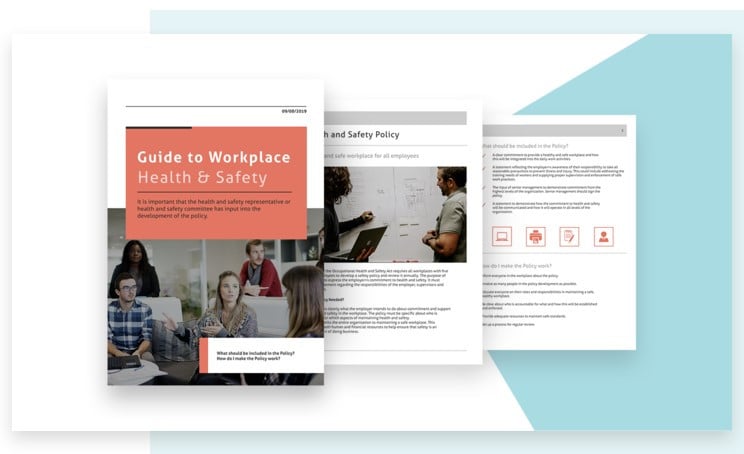
Training is the backbone of every successful organization. It should be purposeful—not contrived—and something employees can actually apply to their daily work lives. If it’s not, the only thing you’ll end up with is a lot of wasted money. And then you’ll convince yourself that it was all just a big ol’ waste of time, right?
It’s an ugly rabbit hole and one you shouldn’t fall into. With a proper employee training program in place, however, you never will. Here’s what you need to know.
The importance of training & education in the workplace
Companies of all sizes can benefit from employee training programs. While many smaller organizations find them too expensive, high-quality training programs can be effective and affordable. Moreover, the benefits of these programs far outweigh their costs.
Larger organizations need training programs to develop their employees and adapt to technological changes. Holistic training initiatives can ease employees into their new roles and keep staff committed to the organization's goals. They’ll feel valued, and as their training continues, employees will gain new skills and apply them to their day-to-day tasks.
That’s not all. Employee training programs can also help businesses retain top talent, track individual performance, and boost productivity. The results are many, and you can read more about them here.
How to implement an effective employee training program
Goal Setting: The Foundation of Successful Training
Set clear and concrete goals that are attainable. Identify areas for improvement by combing through every aspect of your business. This will help you develop the right training initiatives, improve employee satisfaction, and add more value to the company.
You’ll need to establish benchmarks and set time frames as well. For example, some businesses may gauge productivity as a key benchmark while others “recognize a very specific solution in response to a certain need,” says Shelley Osborne— Head of Learning and Development at Udemy. “An example of this would be for a small business that’s growing very rapidly to deploy interview training as a way to ensure its entire team is aligned and scaling.”
Selecting the Right Instructors
For your workforce to succeed, you’ll need program managers who are passionate about their jobs. Find a captain who can steer the ship in the right direction. You’ll want someone who takes pride in what he or she does; namely, helping employees develop and reach their full potential.
Embracing Digital Solutions
In a global survey conducted by MIT Sloan Management Review and Deloitte, nearly 90% of respondents (consisting of managers and executives) said that digital trends will disrupt their industries to a great or moderate extent. Software can provide personalized training experiences to hundreds or even thousands of employees. But what exactly should you look for? First, ensure the platform you choose lets you create impactful e-learning content. Then ask yourself these important questions:
-
Is it flexible and easy to use?
-
Does it provide different support options?
-
Does it include branding options?
-
Does it support real-time collaborative features?
-
Can content be published for mobile and/or other platforms?
-
Can content be republished if necessary?
-
Does it include tracking analytics and other data tools?
Timing and Context Matter
It’s imperative that companies deliver the right training at the right time. “The best time for training is when the learner really has a strong desire and need to learn," says Arabelle Fedora— VP and Managing Principal Consultant of Talent Management at Right Management. "As a trainer, you want them to view the training/development activity as valuable because it’s in sync with whatever motivates or drives them."
Information that’s imparted in the wrong context (or with no context at all) is hard to remember. Information that’s available when employees actually need it isn’t. Always shoot for the latter. Workers are far more likely to apply new information to their current roles if that information is situated. And they’ll learn faster too because these situations provide the context necessary for retaining important knowledge.
Continuous Measurement and Optimization
Training isn’t a static process; it’s always changing. And the beauty of having realistic goals is that you can measure them. E-learning systems provide extensive tracking tools to help organizations evaluate their employees’ progress. Leveraging this data can help instructors know what’s working, what isn’t, and how to optimize their training programs for better results.
The role of personalized and engaging employee training materials
Engagement is everything when it comes to training. In fact, how engaged your employees are will determine just how effective the training is.
To drive that engagement, content should be personalized so that it aligns with the unique needs, learning styles, and retention speeds of employees. If it’s not, workers won’t be motivated enough to improve their skills. Training programs ought to consider employees’ individual pathways so that they can be more effective in their roles immediately after the training is completed.
Training is essential because new hires will leave if they’re ignored and left to fend for themselves. Moreover, long-term employees won’t stick around for much longer if they aren’t being challenged enough. But here’s the catch: you’ll bore your employees to death with too many lectures and webinars (and they won’t remember much of the material anyway).
So how can you navigate sticky situations like this one? By offering digital content that’s engaging, personalized, and created with Joomag.
Leveraging Joomag for Training and Education

Joomag, a cutting-edge content experience platform, provides a comprehensive training solution that empowers businesses to create, distribute, and track digital content seamlessly from a single platform.. Feel free to create interactive training guides, company newsletters SOPs, presentations, and anything else you can think of to train your workforce properly.
To get started, upload a PDF file to our platform or choose from over 300 eye-catching templates. Then add interactive elements like videos, photos, audio files, and feedback plugins to create learning experiences that employees won’t forget.
Request a custom-branded app and we’ll build it for you. Then publish content on it for employees to access anytime, anywhere. Stay informed and track employee engagement with Joomag’s built-in analytics suite.
 FAQ
FAQ
1. Why are employee training programs important for businesses?
Employee training programs are crucial for businesses because they foster skill development, adapt to technological advancements, align employees with organizational goals, retain top talent, track individual performance, and enhance overall productivity.
2. What are the key steps to implementing an effective employee training program?
Implementing an effective training program involves setting clear goals, selecting competent instructors, leveraging digital solutions, timing and context, and continuous improvement.
3. How can personalized and engaging training materials enhance training effectiveness?
Personalized and engaging training materials boost employee engagement, improve training outcomes, tailor content to individual learning styles and job requirements, facilitate immediate application of newly acquired skills. Platforms like Joomag offer interactive content creation tools and customizable templates.


